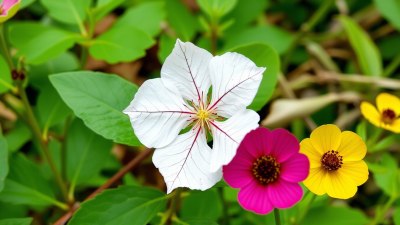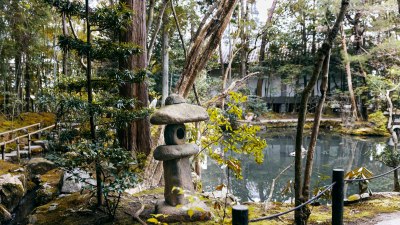Learning to Identify Local Poisonous Plants on Nature Walks
Discover how to identify poisonous plants on nature walks for your safety and knowledge.

Image created with Flux Schnell
Engaging with nature through walks is one of the simplest yet most fulfilling activities one can undertake. However, the natural environment is not just filled with friendly flora; some plants can pose a serious threat to our health. Learning to identify local poisonous plants is a vital skill for nature enthusiasts, hikers, and families looking to enjoy safe and educational outings.
Understanding the potential dangers in our surroundings encourages not only safety but also respect for nature. This article examines common poisonous plants found in various regions, tips for identification, and how to educate oneself and others about these risks while enjoying nature.
The Importance of Identifying Poisonous Plants
Identifying poisonous plants is essential for a variety of reasons. Firstly, knowing the plants that could harm you—especially when foraging for wild edibles—is crucial. Secondly, many plants are highly toxic and can cause severe health issues should they be accidentally ingested or even touched. Thirdly, educating children and companions about these plants reinforces respect for nature and promotes safety.
Many poisonings occur because individuals are unaware of what they are interacting with. In some cases, ingestion is not necessary for harm to occur; simply touching a plant may cause skin irritation or allergic reactions. Thus, awareness is the first line of defense in avoiding plant-related incidents.
Common Poisonous Plants in North America
Awareness of the most common poisonous plants can serve as a foundation for identification skills. Here are some notorious offenders:
1. Poison Ivy
Perhaps the most infamous of the bunch, poison ivy (Toxicodendron radicans) can be found in various environments across North America. Recognizable by its characteristic 'leaves of three' structure, poison ivy can cause a painful, itchy rash upon contact with skin. Its leaves change colors with the seasons—green in the summer, and red or yellow in the fall. Understanding this plant ensures you can avoid it during hikes.
2. Poison Oak
Slightly different in structure but similarly troublesome, poison oak (Toxicodendron diversilobum) manifests as shrubs or small trees in the western United States. Like poison ivy, its leaves can come in clusters of three and can yield a nasty rash. Being able to identify both of these plants can greatly reduce the risk of coming into contact with them.
3. Poison Sumac
Less common but potentially more harmful, poison sumac (Toxicodendron vernix) grows in wet, swampy areas and has compound leaves with many leaflets (typically 7-13). It is essential for nature walkers to recognize this plant, particularly as its toxic effects can be more severe than poison ivy or poison oak. Rash resulting from contact with poison sumac can linger for longer, highlighting the importance of avoidance.
4. Deadly Nightshade
Deadly nightshade, or belladonna (Atropa belladonna), is an herbaceous perennial that grows in various shady locations. It features dark purple berries and green, bell-shaped flowers. Every part of this plant is toxic; ingestion can lead to severe symptoms and even death. Understanding its appearance is vital, especially in outdoor settings.
5. Hemlock
One of the most infamous poisonous plants is the water hemlock (Cicuta maculata), often found in wet areas and alongside streams. Its small white flowers differentiate it from other similar-looking plants. Hemlock is notorious for its lethal properties, and even a small amount can result in death. Careful identification is critical for any nature enthusiast.
Tips for Identifying Poisonous Plants
Identifying poisonous plants involves close observation and a systematic approach. Here are some helpful tips:
1. Know the Local Flora
Familiarizing yourself with the native plants in your area is vital. Local field guides, nature apps, and online resources can assist you in learning about plants specific to your region, including their appearances and habitats.
2. Observe the Whole Plant
To accurately identify a plant, observe its entire structure: leaves, stem, flowers, and fruit. Pay attention to size, shape, and color variations. Some poisonous plants may have harmless relatives, making full examination necessary.
3. Understand Leaf Patterns
Many poisonous plants have distinctive leaf patterns. For example, poison ivy's three-leaved structure is key to identification. However, variations exist, so understanding the nuances is essential. Note the texture, vein patterns, and leaf edges as well.
4. Flower Characteristics
Flowers can be useful for identification, particularly those that are brightly colored or uniquely shaped. Knowing flowering seasons can help too. For instance, knowing that hemlock flowers in late spring can guide your caution during those hikes.
5. Use Technology Wisely
There are many plant identification apps available today, making it easier than ever to recognize flora on the go. Apps often utilize photographs and descriptions, offering instant validation of your findings while out in nature.
Educating Others About Poisonous Plants
Once you're comfortable recognizing poisonous plants, consider sharing this knowledge with friends and family, especially children. Knowledge serves as a powerful tool for safety and exploration.
1. Organize Nature Walks
Plan local nature walks focusing on poisonous plants; make it an engaging learning experience. Explain the importance of safely identifying these plants as part of outdoor education.
2. Create Informative Resources
Design pamphlets or online resources detailing images and descriptions of poisonous plants in your area. This proactive approach features educational material for reference during walks.
3. Discuss Risks
Hold discussions about the risks involved with poisonous plants. Encourage questions and awareness through open dialogue, allowing companions to learn collaboratively.
4. Set an Example
Lead by example; practice safe interactions with flora when outdoors. Calling attention to poisonous plants during your walks reinforces their significance and fosters learning.
Learning to identify local poisonous plants is an important skill that enhances your appreciation of nature while keeping you safe. By recognizing plants such as poison ivy, poison oak, and deadly nightshade, you take proactive steps to protect yourself and those around you. Whether you are hiking in the woods or exploring botanical gardens, having the knowledge to navigate interactions with plants is invaluable. Embrace nature with confidence armed with knowledge!











